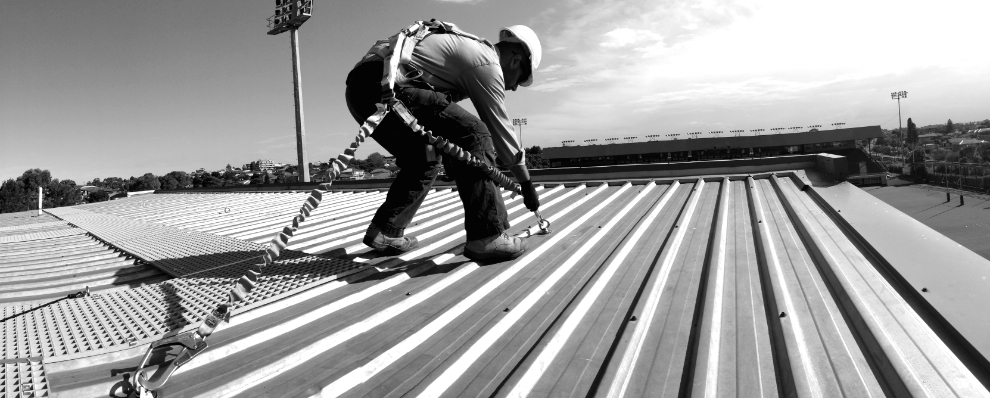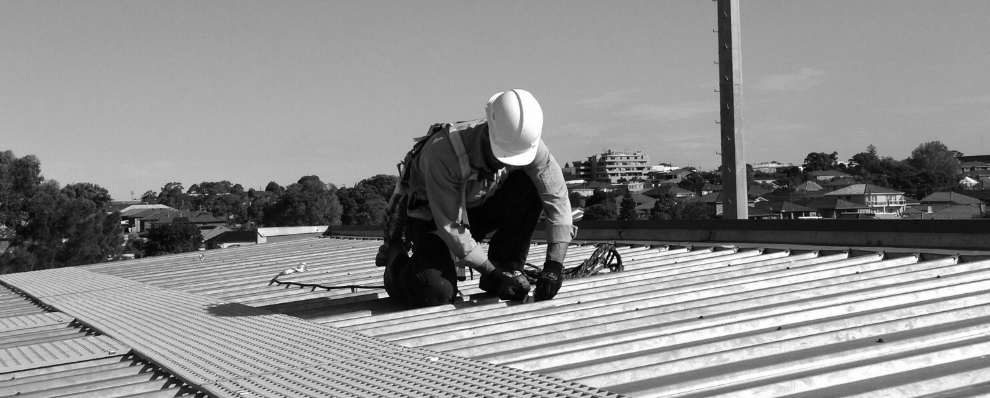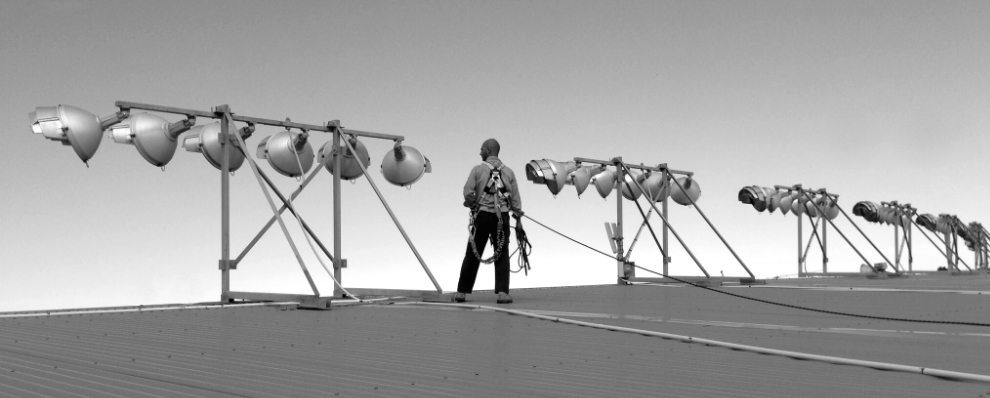Hopefully, you are reading this article before you are dangling off a roof of a multi-story commercial property!
Myth: Fall arrest systems are only needed on skyscrapers.
Fact: There is no doubt that fall arrest systems are essential if you are hanging off the precipice of some of Sydney and Melbourne’s tallest properties, but research shows that working on a single story residential property can be just as dangerous. In fact, half of the 232 fatalities that occurred on Australian building sites over the past eight years resulted from a fall of less than three metres.
Fall arrest systems have two basic functions. The basic function is designed to prevent a worker from falling to the ground to their untimely death. The force absorption feature enables the fall arrest system to safely decelerate the worker and limit the amount of force onto the worker when the fall is arrested.
Roof Anchor Points
A fall arrest system comprises three key components that work together to prevent a worker from falling to the ground. Firstly, an anchor point is installed onto the roof by licensed anchor point installers and provides stable anchorage for the system. The second vital component is the connecting device, which connects the worker to the anchor point and comes in a vast array of job-specific designs. The final part of the system is the harness, which attaches the worker to the connecting device.
Only attach your fall arrest system to a certified roof anchor point. Attaching your connecting device to a chimney, conduit, scaffolding or handrail can spell danger for yourself and those working with you!
Not going into the legal aspect here, but company and property owners have a responsibility to provide a safe working environment for workers. Anchor points need to be installed on roofs when working at height is necessary. Each anchor point should be certified annually to ensure that it is in safe working order. Each worker has the responsibility to ensure that they are using the fall arrest system in its intended use.
Connecting Device
Your team is only as strong as it’s weakest point! What is the weakest point on your fall arrest system? There shouldn’t be one!
Make sure that you are using your lanyard/connecting device in its intended function. Ensure that there are no twists, knots or signs of damage on your connecting device. Once you are connected, do not disconnect the device until you are safe on the ground again. There are a lot of horror stories of workers who have unclipped to manoeuvre around a TV antenna or chimney on the roof and have then come to grief. Once you are connected, stay connected!
DIYHowTo Tip: Inspect your equipment yourself before you climb onto the roof. Any cuts, nicks or tears in the connecting device or harness are your responsibility. Inspect carefully each component of the fall arrest system for loose stitches, tears, seam weakening, racks, distorted locks, frayed material or chemical damage.
Body Harness
A full body harness needs to be properly fitted in order to evenly spread the force in the event of a fall. You may not notice a twist in the harness when you are working on the roof, but when you are hanging from the fall arrest system that twist is going to cause a major amount of unnecessary pain!
Each harness manufacturer has their own instructions for adjusting and putting on the harness, so just follow what they say. Generally, the goal is to have the D-ring shackle located at the top half of your back. This will allow you to dangle semi-comfortably as you wait for the rescue plan to be implemented.
You may feel that you are a more effective worker and can get more done by wearing the straps loose, but this totally defeats the use of the body harness. It is designed to be worn snugly so that the force is evenly distributed throughout the harness. If you want the world’s biggest wedgie, wear your leg straps loose. When you fall the straps will rip up your legs into your groin and will cause you permanent injury. Not as bad as if you fell to the ground, but you will always regret not wearing your harness tight.
Rescue Plan
Before you climb onto a roof wearing a fall arrest system, you should know the rescue method that is used at the facility or by the company that you are working for. Whether the plan is for a fellow worker to access you via a ladder from the ground, a retrieval system back onto the roof or a mobile platform to get you back to safety, ensure you know the system and that your team does as well.
Myth: Once the fall arrest system prevents the fall, you are safe.
Fact: Surviving the fall is only half the story. Orthostatic shock, also known as suspension trauma, is a serious consequence of surviving a fall and can affect a person after hanging in your harness for over five minutes. Presenting with similar symptoms to shock (eg. Faintness, nausea, dizziness, low blood pressure, paleness and sweating), this is a serious medical condition that needs to be treated rapidly.
If left untreated suspension trauma will lead to central ischaemic response, leading to death as there will not be enough blood flow to the brain. If you or a worker is hanging from your body harness for over five minutes and any of these symptoms are present, you should call for an ambulance to provide primary first aid.
DIYHowTo Tip: An effective rescue plan can prevent severe suspension trauma. What is your plan? Do all the members of your team know your plan?
tredRITE Height Safety
Address: 6/26 Tintern Rd, Ashfield NSW 2131, Australia
Phone: 1300 767 099
Website: https://tredrite.com.au/



